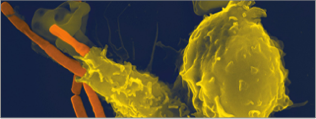

About diabetes
What is diabetes?
Diabetes is a chronic disease that occurs either when the pancreas does not produce enough insulin or when the body cannot effectively use the insulin it produces. Insulin is a hormone that regulates blood sugar. Hyperglycaemia, or raised blood sugar, is a common effect of uncontrolled diabetes and over time leads to serious damage to many of the body's systems, especially the nerves and blood vessels.
347 million people worldwide have diabetes. In 2004, an estimated 3.4 million people died from consequences of fasting high blood sugar. A similar number of deaths has been estimated for 2010. More than 80% of diabetes deaths occur in low- and middle-income countries.
Definition of diabetes used for the estimates: fasting glucose >= 7.0 mmol/L or on medication.
Estimation of people who died from consequences of high fasting blood sugar in 2004: 3.4 million
Number of people worldwide that have diabetes: 347 million
Percent of world population with diabetes: 5%
WHO projects that diabetes will be the 7th leading cause of death in 2030
Source: World Health Organisation (http://who.int/mediacentre/factsheets/fs312/en/)
Type 2 diabetes
Type 2 diabetes (formerly called non-insulin-dependent or adult-onset) results from the body’s ineffective use of insulin. Type 2 diabetes comprises 90% of people with diabetes around the world (5), and is largely the result of excess body weight and physical inactivity.
Symptoms may be similar to those of Type 1 diabetes, but are often less marked. As a result, the disease may be diagnosed several years after onset, once complications have already arisen.
Until recently, this type of diabetes was seen only in adults but it is now also occurring in children.
Impaired glucose tolerance (IGT) and impaired fasting glycaemia (IFG)
Impaired glucose tolerance (IGT) and impaired fasting glycaemia (IFG) are intermediate conditions in the transition between normality and diabetes. People with IGT or IFG are at high risk of progressing to type 2 diabetes, although this is not inevitable.
What are common consequences of diabetes?
Over time, diabetes can damage the heart, blood vessels, eyes, kidneys, and nerves.
Diabetes increases the risk of heart disease and stroke. 50% of people with diabetes die of cardiovascular disease (primarily heart disease and stroke) (6).
Combined with reduced blood flow, neuropathy (nerve damage) in the feet increases the chance of foot ulcers, infection and eventual need for limb amputation.
Diabetic retinopathy is an important cause of blindness, and occurs as a result of long-term accumulated damage to the small blood vessels in the retina. One percent of global blindness can be attributed to diabetes (7).
Diabetes is among the leading causes of kidney failure (4).
The overall risk of dying among people with diabetes is at least double the risk of their peers without diabetes (8).
How can the burden of diabetes be reduced?
Prevention
Simple lifestyle measures have been shown to be effective in preventing or delaying the onset of type 2 diabetes. To help prevent type 2 diabetes and its complications, people should:
• achieve and maintain healthy body weight;
• be physically active - at least 30 minutes of regular, moderate-intensity activity on most days. More activity is required for weight control;
• eat a healthy diet of between three and five servings of fruit and vegetables a day and reduce sugar and saturated fats intake;
• avoid tobacco use - smoking increases the risk of cardiovascular diseases.
Diagnosis and treatment
Early diagnosis can be accomplished through relatively inexpensive blood testing.
Treatment of diabetes involves lowering blood glucose and the levels of other known risk factors that damage blood vessels. Tobacco use cessation is also important to avoid complications.
Interventions that are both cost saving and feasible in developing countries include:
• moderate blood glucose control. People with type 1 diabetes require insulin; people with type 2 diabetes can be treated with oral medication, but may also require *insulin;
• blood pressure control;
• foot care.
Other cost saving interventions include:
• screening and treatment for retinopathy (which causes blindness);
• blood lipid control (to regulate cholesterol levels);
• screening for early signs of diabetes-related kidney disease.
These measures should be supported by a healthy diet, regular physical activity, maintaining a normal body weight and avoiding tobacco use.
References
(1) Danaei G, Finucane MM, Lu Y, Singh GM, Cowan MJ, Paciorek CJ et al. National, regional, and global trends in fasting plasma glucose and diabetes prevalence since 1980: systematic analysis of health examination surveys and epidemiological studies with 370 country-years and 2.7 million participants. Lancet, 2011, 378(9785):31-40.
(2) Global health risks. Mortality and burden of disease attributable to selected major risks. Geneva, World Health Organization, 2009.
(3) Mathers CD, Loncar D. Projections of global mortality and burden of disease from 2002 to 2030. PLoS Med, 2006, 3(11):e442.
(4) Global status report on noncommunicable diseases 2010. Geneva, World Health Organization, 2011.
(5) Definition, diagnosis and classification of diabetes mellitus and its complications. Part 1: Diagnosis and classification of diabetes mellitus. Geneva, World Health Organization, 1999 (WHO/NCD/NCS/99.2).
(6) Morrish NJ, Wang SL, Stevens LK, Fuller JH, Keen H. Mortality and causes of death in the WHO Multinational Study of Vascular Disease in Diabetes. Diabetologia 2001, 44 Suppl 2:S14-S21.
(7) Global data on visual impairments 2010. Geneva, World Health Organization, 2012.
(8)Roglic G, Unwin N, Bennett PH, Mathers C, Tuomilehto J, Nag S et al. The burden of mortality attributable to diabetes: realistic estimates for the year 2000. Diabetes Care, 2005, 28(9):2130-2135.
Source: World Health Organisation (http://who.int/mediacentre/factsheets/fs312/en/)
